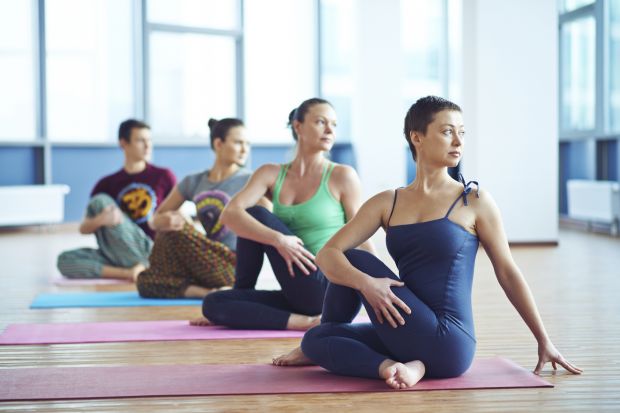Academics should borrow yoga techniques and get students to notice and use their bodies more in the classroom to create a better learning environment, two researchers claim.
Teachers in any higher education setting “can increase the possibilities for bodily performance” by, for example, getting students to “physically demonstrate” their thoughts about an issue, their study suggests.
Or they could use their own bodies to “encourage, direct, or respond to classroom activities and discussions” and consider changing the dynamics of the classroom by sitting among their students.
Brandy Quinn, associate professor in the College of Education at Texas Christian University, and Callie Maddox, assistant professor in the department of sport at Miami University, penned the article in Teaching in Higher Education because the sector is “losing sight of embodiment as a foundational element of teaching and learning”, something that was brought into focus by the switch to online learning during the pandemic.
College classrooms, whether in person or online, “continue to largely be spaces of intellectual work divorced from substantial consciousness of physicality”, they write.
Drawing on their own experiences both as teachers and qualified yoga instructors, the authors say an academic should be committed to presence and observation – central concepts in yoga – and work to “notice and engage with both her own body and that of her students”.
Speaking to Times Higher Education, Dr Maddox said during her intensive 200-hour yoga teacher training course, she learned “more about the connections between embodiment, movement and the self”.
Moving into a higher education setting, she said she would regularly draw on strategies learned to engage with students and “remind myself to be aware of their bodies and physical presence in the classroom”.
“Although I hadn’t taught a formal yoga class in a couple of years, I noticed that certain elements of teaching yoga – close observation, remaining present, being cognisant of bodies in space – bled into my more traditional classroom setting as a professor,” she added.
While teaching online has made this harder, Dr Maddox pointed out that seeing faces on a computer screen allowed her to observe her students closer than would normally be possible, as she could see their facial expressions, reactions and responses to what she was telling them.
Dr Quinn, who trained as an instructor after securing her first tenure-track position, said the training “catalysed a change in her teaching”.
“I stood differently in front of my students. I breathed differently. I noticed my students differently. In an incredibly physical way, I felt entirely present,” she writes.
Both said that embracing these techniques can shape individual teaching and learning but also have a wider impact on educational policy and curriculum development.
Dr Maddox said that at Miami she had noticed “increased levels of stress and anxiety in our students this past year”, something she can see both “on and in their bodies”.
“For me, engaging in an embodied pedagogy that considers the bodies of both teachers and students can help alleviate stress and contribute to an ethics of care,” she added.
Register to continue
Why register?
- Registration is free and only takes a moment
- Once registered, you can read 3 articles a month
- Sign up for our newsletter
Subscribe
Or subscribe for unlimited access to:
- Unlimited access to news, views, insights & reviews
- Digital editions
- Digital access to THE’s university and college rankings analysis
Already registered or a current subscriber? Login







